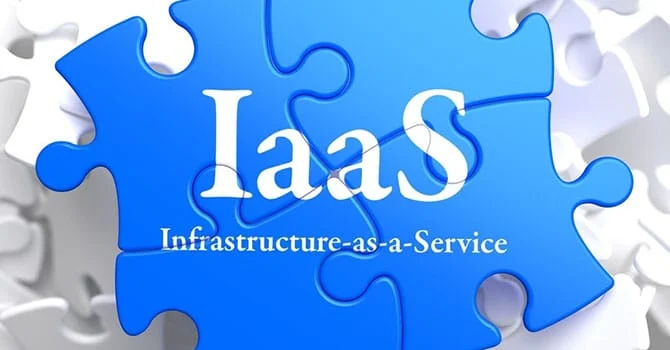IaaS vs. PaaS: Which Is Right For Your Application?

Infrastructure-as-a-Service and Platform-as-a-Service are two of the most popular cloud modalities. Taking the time to understand the differences between IaaS and PaaS will pay-off in the long run. Making the wrong choice can limit flexibility and agility and may have cost implications.
In this article, I’d like to compare IaaS and PaaS to give CIOs and developers a clear picture of the relative merits of each.
What is IaaS?

A decade ago, all IT infrastructure was made up of physical servers in data centers. The data centers may have been owned by the company or a third-party data center operator. The business’s applications and services ran directly on the physical servers — which are usually called dedicated servers.
There are advantages and disadvantages to this approach. The main disadvantage is that dedicated servers can take hours or days to deploy. It can also be challenging to utilize dedicated servers efficiently.
Infrastructure-as-a-Service is a server hosting platform that provides a similar environment to dedicated servers, but rather than giving access directly to the physical server, virtual servers are run on top of a virtualization layer. Virtual servers have many of the advantages of bare-metal servers, but solve the problems inherent in a dedicated server platform.
Virtual servers can be deployed instantly. With a single command, a complete server environment is made available to clients, an environment that looks identical to a bare metal server from the inside.
Multiple virtual servers can be deployed on a single physical server, which allows enterprise-grade hardware to be used more efficiently. In consequence, virtual cloud servers are often less expensive than dedicated equivalents.
Because buying, deploying, and managing a physical server is a substantial investment, providers demand the security of contracts that run for at least a month, and often longer. If the user purchases their own hardware, rather than renting, the full cost of the server has to be paid up-front. The economics of Infrastructure-as-a-Service are different, allowing providers to bill by minutes or hours, rather than months.
On-demand pricing means that infrastructure becomes an operating cost, rather than a capital cost — the total cost of ownership is spread over a longer period of time, something that’s vitally important for startups and companies who would rather use their capital in other ways.
Infrastructure-as-a-Service revolutionized how we think about IT infrastructure, and has had a lasting impact on the way we develop and manage applications and services.
What is PaaS?

Platform-as-a-Service is also based on infrastructure virtualization, but clients interact with PaaS platforms at a higher level. Infrastructure-as-a-Service makes a complete server environment available to users, with all the flexibility that entails. PaaS, on the other hand, provides a preconfigured environment into which developers can install their applications.
A typical PaaS platform will select the operating system, libraries, and software available to the developer. Developers don’t have full control over the environment, which can make life easier in the short term, but cause problems as applications grow and requirements evolve.
On the plus side, PaaS platforms tend to be less complicated to use — much of the work has already been done, and the platform vendor ensures that everything running on the server is compatible and regularly updated.
But PaaS platforms tend to be substantially less flexible than IaaS. If the user requires different libraries for their application, they have few options. You can think of PaaS as a more powerful version of the shared hosting of old. You’re given a carefully controlled environment that works well as long as you don’t need to do anything that falls outside o the platform’s expected parameters.
PaaS platforms tend to focus on the most commonly used technologies, which might not always be the right technology for your application.
Platform-as-a-Service is useful for application developers who want to get up-and-running as quickly as possible without having to sweat the details of server management, and they can be great for the early development stages of applications when teams care more about putting together a minimum viable product than scaling, redundancy, and other issues that accompany growth.
However, when applications begin to scale and have requirements that go beyond the facilities offered within the constrained PaaS environment, Infrastructure-as-a-Service or dedicated servers are often the best choice.
Infrastructure-as-a-Service And Containers
If we think about the purported advantage of Platform-as-a-Service, we’ll see that many of the upsides of PaaS can be brought to Infrastructure-as-a-Service platforms while retaining all the flexibility and agility afforded by on-demand cloud servers:
- A predictable development and production hosting environment.
- An environment that can be replicated easily.
- Reliable and secure infrastructure.
In the early days of the cloud, managing development and production environments across multiple production, staging, and development environments was challenging. The big appeal of PaaS was to have all that work done for you. You could simply focus on the code.
In the intervening years, the tooling around app development and deployment has matured. A key example of this maturity is the ecosystem around container systems like Docker. Containers are lightweight, replicable, portable environments, akin to virtual servers but without the requirement for a virtualization layer and guest operating system.
A container holds everything an application needs to run, including code, libraries, configurations, and so on. Containers can run on production servers, but also on staging servers, continuous integration and deployment platforms, and a developer’s laptop.
The advantages of container-based development and deployment are similar to those of PaaS platforms, with the added benefit that you decide what goes into your containers. You’re not constrained by what’s available on a PaaS platform. Docker containers can be easily, quickly, and automatically deployed onto an IaaS server.
Managed Cloud
Which just leaves the management of the server itself. Many of the most prominent Infrastructure-as-a-Service providers don’t offer management services — you’re thrown in at the deep end. By choosing a managed cloud provider, you benefit from a redundant, secure, and stable hosting environment where most of the major details of server management are taken care of.

